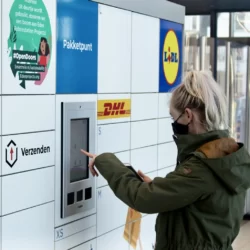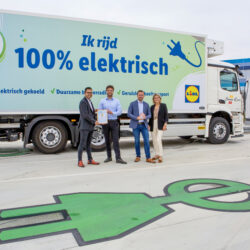Good action plan holds key to profitable sustainability investments

Does sustainability only cost money, or can it actually be profitable? Many supply chain managers are keen to pursue sustainability, but are unsure whether all the efforts are worth it. During a recent Supply Chain Media webinar, Zencargo’s Chris Brughuis explained how to make a business case for sustainability and illustrated its success for shoe brand Vivobarefoot.
By Marcel te Lindert
Founded 11 years ago, Vivobarefoot designs wide, thin and flexible footwear aimed at creating the sensation that the wearer is barefoot. The company became B Corp certified last year, demonstrating its strong focus on sustainability, and has an annual growth rate of around 30%. That growth is accompanied by some pain points said Chris Brughuis, Head of Sales Benelux at Zencargo. “Until recently, they had to manually collect the data on supply chain carbon emissions, which made it difficult to perform analysis.”
Moreover, collecting CO2 data manually is not a scalable process – especially when the supply chain keeps expanding. To facilitate revenue growth, Vivobarefoot kept adding new suppliers and introducing new logistics solutions, resulting in an ever-more complex supply chain. “It became increasingly difficult to measure emissions and monitor the carbon footprint,” Brughuis explained.
Partnership with Pledge
In partnership with start-up Pledge, Zencargo developed a solution to map the carbon footprint. Pledge gathers suppliers’ carbon emissions data on its platform and then consolidates all the information to generate emissions reports in line with the applicable standards. “We don’t have the necessary in-house expertise for this. Pledge is a specialist who offers various methodologies for calculating the carbon footprint,” added Brughuis.
Zencargo’s own transport platform provides the transport data, product data and purchase order data. “If Vivobarefoot ships an ocean freight container or books an air cargo shipment, together with Pledge we can calculate the carbon emissions. We know the fill rate of the container or trailer and how many products are in it. Pledge knows the carbon emissions for the route of the container or trailer,” Brughuis stated.
Consolidating goods flows
Vivobarefoot now has up-to-date insight into the carbon footprint of its inbound goods flow. Moreover, because Zencargo and Pledge have also added historical data, the company knows what its carbon footprint was in 2019. “We are using that footprint as the baseline so we can closely monitor the progress. That enables Vivobarefoot to formulate goals and create an action plan to achieve them.”
One of those goals is to reduce the number of less-than-container-load (LCL) shipments by consolidating even more goods flows. “We know when suppliers expect their shipments to Vivobarefoot to be ready. Based on that, we can recommend that certain shipments are combined to fill a container. That might sometimes mean that Vivobarefoot has to make concessions and wait a little longer to receive a delivery, but it results in a smaller footprint. The number of air cargo shipments can be reduced in a similar way.”
Use of standards
In the webinar, Brughuis explained how companies like Vivobarefoot can make a business case for sustainability. That starts with understanding which concrete goal the company wants to achieve and creating an action plan together with all internal and external stakeholders. Brughuis advised using a standard for extra guidance, such as the B Corp standard in Vivobarefoot’s case. Other widely used standards are offered by the Science Based Targets initiative (SBTi) and the Global Logistics Emission Council (GLEC).
Brughuis: “GLEC provides a measurement method that allows companies to calculate the combined total carbon emissions from different modes of transport, such as road, sea and air. If a company lacks some of the CO2 data, it’s still possible to arrive at a good estimate based on some assumptions. The SBTi was developed by the UN and others to set targets for carbon footprint reduction based on scientific insights, with a strong focus on Scope 3 emissions.”
Avoiding fines and revenue loss
Fines are one of the factors that can make or break the business case. Besides risking financial penalties for failing to comply with ever-tighter sustainability legislation, companies could also lose sales revenue if they don’t comply with customers’ own sustainability requirements. “On the flipside, investing in sustainability can contribute to lower costs. More operational efficiency and better planning and collaboration can result in a lower cost price per item. Plus sustainability offers new opportunities, such as to tap into new markets and grow the customer base.”
Brughuis also mentioned some less tangible benefits, such as enhanced attractiveness to new employees. “The new generation of employees are less interested in the salary, and more interested in the company’s vision and mission; they want to feel good about the company they work at. That leads to lower recruitment costs and more continuity. In addition, think about consumer confidence and attractiveness to investors. A growing number of investors are focusing on companies that are committed to sustainability.”
Practical tips
Lastly, Brughuis offered some practical tips for supply chain managers. One tip was to use tools that help them to set realistic goals and track progress, while another recommendation was to involve stakeholders and ensure a shared vision. Additionally, he advised them to stay abreast of laws and regulations to be prepared when they come into effect. “And seek support if needed. There are multiple specialists who can provide the right insights and serve as a sounding board,” he concluded.










